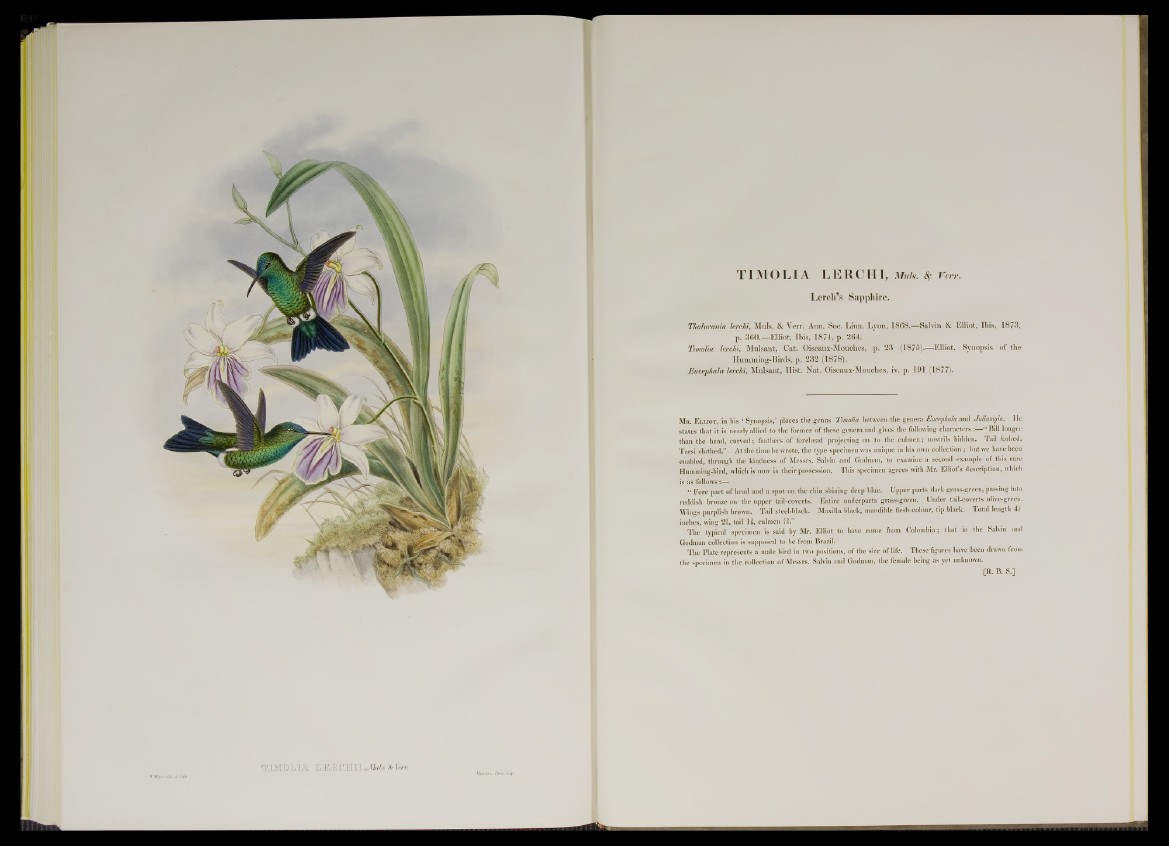
nr'TMiTM.TrA i ï M a 3 I » * i j
.Mintnti Bnv.imp.
TIMOLIA LERCHI, Muls. Sç Vert\
Lerch’s Sapphire.
Thalurania lerchi, Muls. & Yerr. Ann. Soc. Linn. Ly on , 1 8 6 8 .— Salvin & Ellio t, Ibis, 1 8 7 3 ,
p. 3 6 0 .— Ellio t, Ibis, 1 8 7 4 , p. 2 64.
Timolia lerchi, Mulsant, Cat. Oiseaux-Mouches, p. 2 3 (1 8 7 5 ).— Ellio t, Synopsis o f the
Humming-B irds, p . 2 3 2 (1878).
Eucephala lerchi, Mulsant, H ist. N a t. Oiseaux-Mouches, iv. p. 191 (1877).
M r. E l liot , in his ‘ Synopsis/ places the genus Timolia between the genera Eucephala and Juliamyia. He
states that it is nearly allied to the former o f these genera and gives the following characters : - S Bill longer
than the head, curved; feathers o f forehead projecting on to the cuhnen; nostrils hidden. Tail forked.
Tarsi clothed.” At the time he wrote, the type specimen was unique in his own collection ; but we have been
enabled, through the kindness o f Messrs. Salvin and Godman, to examine a second example of this rare
Humming-bird, which is now in their possession. This specimen agrees with Mr. Elliot s description, which
is as follows .
“ Fore part o f head and a spot on the chin shining deep blue. Upper parts dark grass-green, passing into
reddish bronze on the upper tail-coverts. Entire underparts grass-green. Under tail-coverts olive-green.
Wings purplish brown. Tail steel-black. Maxilla black, mandible flesh-colour, tip black. Total length
inches, wing 2£, tail Ijfl culmen H .”
The typical specimen is said by Mr. Elliot to have come from Colombia; that in the Salvin and
Godman collection is supposed to be from Brazil.
The Plate represents a male bird in two positions, o f the size of life. These figures have been drawn from
the specimen in the collection o f Messrs. Salvin and Godman, the female being as yet unknown.
[R. B. S.]